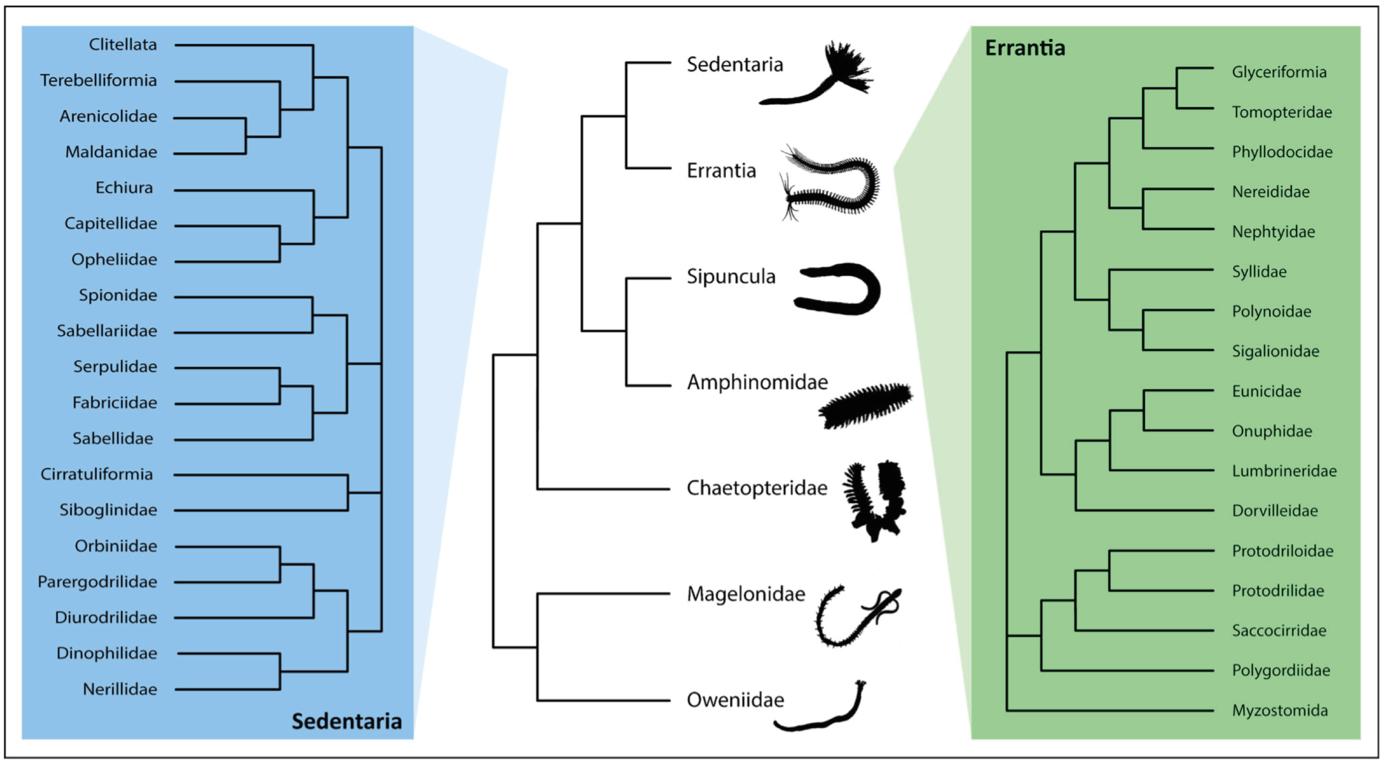Research
Not everything that looks like a worm belongs to this group, and many animals hide their ringworm characteristics behind a different, strongly modified appearance. An example of the latter is the inclusion of the splash and hedgehog worms (formerly Sipuncula and Echiuria) in the Annelida on the basis of the shape of their organ systems and their development. According to our current understanding, the more species-rich and diverse group of "Polychaeta" (marine bristle worms) are not monophyletic (going back to a "stem species" and self-contained) as a sister group to Clitellata (girdle worms, i.e. Oligochaeta (few bristle worms) and Hirudinea (leeches)) - "Polychaeta" are rather paraphyletic, and the monophyletic Clitellata evolved within the Sedentaria group (Figure 1). Strange-looking splash worms and hedgehog worms (Sipuncula and Echiura) also belong to the annelids, as does Pogonophora, but have lost their "polychaetes appearance" to a certain extent due to their way of life or habitat. These reclassifications (many of them only within the last few years) mainly show us two gaps in our knowledge:
- The evolution of the annelids and thus the formation of the different blueprints, developmental processes and ways of life as an adaptation to the different habitats is still largely unknown. This is also evident in the elucidation of relationships within the group - while some branches of the worm tree are quite robust (i.e. found in many (molecular and morphological) analyses), the relationship of, for example, the family of microscopic Dinophilidae to other annelids is still unclear, as different analyses come to different conclusions.
- Due to the extreme adaptability of the animal group and the regular description of new species, we know about the diversity of this group, but this also shows that several thousand species are still waiting to be discovered or described. Modelling based on previous data expects up to 5000 new species by the year 2100, whose discovery is due on the one hand to a strengthening of taxonomic research, and on the other hand to the exploration of new, extreme habitats such as the deep sea, caves and interstitium (space between sediment grains).


